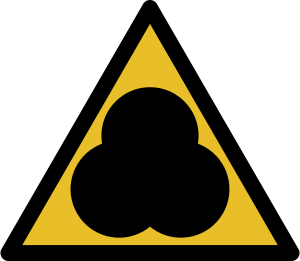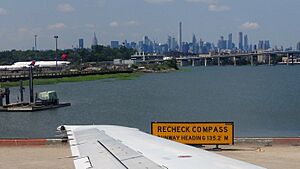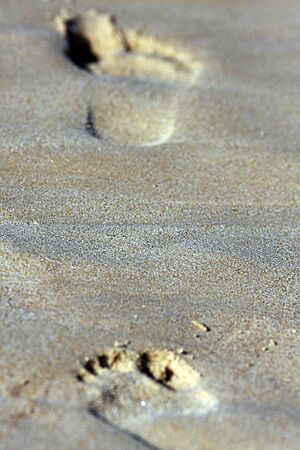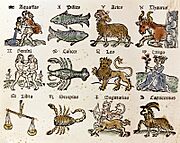Sign facts for kids
A sign is anything that tells us about something else. It could be an object, a feature, an event, or even an idea. When you see a sign, it usually means something else is likely happening or present.
For example, thunder is a natural sign of a storm. Medical symptoms are signs of a disease. These are called natural signs because they have a direct cause-and-effect link.
Other signs are made by agreement. These are called conventional signs. A full stop at the end of a sentence is a conventional sign that the sentence is finished. Words in a language and even gestures are also signs. They all express particular meanings because we agree on what they mean.
The physical objects we often call signs (like notices or road signs) usually give information or instructions. They use written text, symbols, pictures, or a mix of these.
The study of signs and symbols is called semiotics. It explores how signs work and how we understand them.
Contents
What is a Sign?
Signs are all around us! They help us make sense of the world. Think of a sign as a clue or a message. It connects two things: the sign itself and what it means. When we see a sign, our minds connect it to something else.
Natural vs. Made-Up Signs
Signs can be divided into two main types:
- Natural signs: These signs happen on their own. They are linked to what they mean by nature. For instance, smoke is a natural sign of fire. A blush on someone's face can be a natural sign of embarrassment.
- Conventional signs: These signs are created by people. We agree on what they mean. Words are a great example. The word "tree" doesn't look like a tree, but we all agree it means the tall plant with leaves. Traffic lights are another example. A red light means "stop" because we have all agreed on that meaning.
Our minds are always working to understand these signs. This helps us communicate, learn, and understand our surroundings.
Different Kinds of Signs
The word "sign" has many uses. Here are some common ways we use it:
Signs in Everyday Life
- Hand gestures: Communicating using your hands, such as in sign language.
- Tracking signs: Evidence left behind by animals or people, like footprints or broken branches.
- Signboards: Physical boards with information, like a store sign or a notice board.
- Omens: Events or occurrences that some people believe predict the future.
- Information signs: Notices that guide, advise, or warn people, like "Exit" or "Wet Floor."
- Traffic signs: Signs that tell drivers what to do, such as a stop sign or a speed limit sign.
- Commercial signs: Signs used by businesses for advertising or identification, like a neon sign for a restaurant.
- Signatures: A handwritten name on a document to show who wrote it or approved it.
Signs in Math and Science
- Mathematical signs: In mathematics, the sign of a number tells if it is positive or negative (like +5 or -5).
- Signedness in computing: In computers, a "sign bit" shows if a number is positive or negative.
- Biological signs: An indication that a living thing is present, like animal droppings.
- Medical signs: In medicine, these are things a doctor can observe about a patient's health, like a fever or a rash. This is different from a symptom, which is what the patient feels.
- Signs in writing: A basic unit in a writing system, like a letter or a character.
Images for kids
-
A signboard on a beach in Durban, South Africa, from the apartheid era. It shows a racially segregated beach.
See also
 In Spanish: Signo para niños
In Spanish: Signo para niños
- Asemic writing
- Commercial signage
- Icon
- Ideogram
- List of symbols
- Logotype
- National symbol
- Neon sign
- Religious symbolism
- Representation
- Semiotics
- Signing (disambiguation)
- Symbol
- Synchronicity
- Traffic sign
- Universal language






